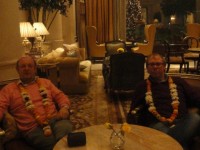
Kota
Kota’s broad avenues, leafy roads and its status as a divisional headquarter of the Indian Army hide its ancient beginnings. But Kota is as much a child of fractious history as its fellow Rajput kingdoms, born of blood, gore and diplomacy.It was in 1241 that a classic Rajput, Deva Hara of the fierce Hara clan, came to these parts, wanted what he saw and attempted to conquer. He won and the kingdom of Bundi was established. Around that time, nearby Kota was under the Bhil tribals lead by their chief Koteya. He was defeated by Bundi’s Jait Singh in 1264 and a fort’s construction was started there. Koteya’s severed head was buried, as tradition decreed, in its foundation. And so Kota became a jagir, or land grant, of Bundi, at the dispensation of the heir apparent.
Connectivity:
By Air
Nearest airport, Sanganer, Jaipur, is connected by daily flights to all metros.
By Rail
Kota Junction is well-connected to Delhi by the new Nizamuddin-Udaipur Express, Mumbai August Kranti and Trivandrum Rajdhani superfast trains and to Jaipur by the Jaipur-Kota Fast Passenger and Jaipur-Bombay Central superfast trains.
By Road
Kota is a comfortable 5-hr drive along NH-12 from Jaipur via Tonk, Devli and Bundi.
City Palace
The imposing façade of Kota’s fortified City Palace, which dates back to 1625, stretches along the banks of the Chambal River, recalling the princely past of this now heavily industrialized city. Kota’s artistic heritage is well-represented in the palace apartments – every available surface is covered with miniature paintings, mirror work, murals and mosaics. Particularly resplendent is the Durbar Hall, with its ebony-and-ivory doors, and paintings depicting Kota’s history.













